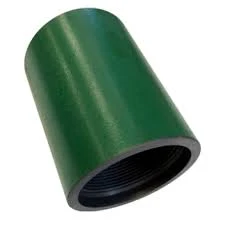- Afrikaans
- Albanian
- Amharic
- Arabic
- Armenian
- Azerbaijani
- Basque
- Belarusian
- Bengali
- Bosnian
- Bulgarian
- Catalan
- Cebuano
- Corsican
- Croatian
- Czech
- Danish
- Dutch
- English
- Esperanto
- Estonian
- Finnish
- French
- Frisian
- Galician
- Georgian
- German
- Greek
- Gujarati
- Haitian Creole
- hausa
- hawaiian
- Hebrew
- Hindi
- Miao
- Hungarian
- Icelandic
- igbo
- Indonesian
- irish
- Italian
- Japanese
- Javanese
- Kannada
- kazakh
- Khmer
- Rwandese
- Korean
- Kurdish
- Kyrgyz
- Lao
- Latin
- Latvian
- Lithuanian
- Luxembourgish
- Macedonian
- Malgashi
- Malay
- Malayalam
- Maltese
- Maori
- Marathi
- Mongolian
- Myanmar
- Nepali
- Norwegian
- Norwegian
- Occitan
- Pashto
- Persian
- Polish
- Portuguese
- Punjabi
- Romanian
- Russian
- Samoan
- Scottish Gaelic
- Serbian
- Sesotho
- Shona
- Sindhi
- Sinhala
- Slovak
- Slovenian
- Somali
- Spanish
- Sundanese
- Swahili
- Swedish
- Tagalog
- Tajik
- Tamil
- Tatar
- Telugu
- Thai
- Turkish
- Turkmen
- Ukrainian
- Urdu
- Uighur
- Uzbek
- Vietnamese
- Welsh
- Bantu
- Yiddish
- Yoruba
- Zulu
api casing sizes
Understanding API Casing Sizes A Comprehensive Guide
In the world of oil and gas drilling, the importance of casing cannot be overstated. Casing provides structural integrity to the wellbore, protects against wellbore collapse, and isolates various underground formations. API (American Petroleum Institute) casing sizes play a critical role in ensuring that these tasks are executed effectively and efficiently. This article delves into the nuances of API casing sizes, exploring their specifications, applications, and the significance of standardized sizing in the drilling industry.
What is API Casing?
API casing refers to pipes used in the drilling process, which are designed according to the standards set by the American Petroleum Institute. These standards help to ensure compatibility and safety across the industry. API casing comes in various sizes and grades, each tailored for different applications within a drilling operation, including surface, intermediate, and production casing.
Standard API Casing Sizes
API casing sizes are standardized and typically expressed in nominal dimensions. The most common sizes in use range from 4.5 inches to 20 inches in diameter, although larger sizes can be found in specific applications. The nominal diameter is often supplemented by wall thickness specifications, categorized as “schedule” numbers. For instance, a 10-inch API casing might have different wall thicknesses depending on its designated schedule, affecting its strength and impermeability.
Casing Grades and Specifications
Casing grades are classified according to their yield strength, which is crucial for ensuring that they can withstand the pressure and stresses encountered in various drilling environments. Common API casing grades include
1. J55 A low-yield strength casing often used in less demanding applications. 2. K55 Slightly higher yield strength than J55, making it suitable for intermediate applications. 3. N80 A line of higher strength options, including N80-1 and N80Q, suitable for deeper and more challenging wells. 4. P110 A premium grade offering the highest yield strength among the common casing grades.
api casing sizes

Knowing the appropriate grade for the intended application is critical for operational success and safety.
Effective API Casing Design
The design of API casing must take into account several factors, including the depth of drilling, the geology of the area, and the expected pressures and temperatures during operations. For example, in high-pressure and high-temperature (HPHT) wells, selecting casing with a higher grade will provide the necessary strength to prevent failures.
Moreover, casing must be designed with consideration for the entire lifecycle of the well. This includes factors such as corrosion resistance and compatibility with the fluids being used. The right selection of casing can significantly affect the well's productivity and longevity, making it crucial to work with experienced engineers in the decision-making process.
Significance of Standardization
The standardization of API casing sizes plays a vital role in promoting safety and efficiency within the industry. By having a common set of dimensions and specifications, operators can more easily procure equipment, anticipate performance, and share technologies across various platforms and locales.
Additionally, standardized casing sizes facilitate collaboration among different firms engaged in drilling operations. They enable the seamless transition of technology and practices, as teams can trust that equipment designed to API specifications will integrate with existing infrastructures.
Conclusion
API casing sizes are a fundamental aspect of the oil and gas industry, representing a critical component in the safety, efficiency, and operational success of drilling operations. Understanding the intricacies of various casing sizes, grades, and their applications is essential for professionals in the field. By recognizing the importance of these standards, industry players can make informed decisions that not only enhance productivity but also ensure the safety of their operations in the complex and challenging environment of oil and gas exploration and production.
-
Tubing Pup Joints: Essential Components for Oil and Gas OperationsNewsJul.10,2025
-
Pup Joints: Essential Components for Reliable Drilling OperationsNewsJul.10,2025
-
Pipe Couplings: Connecting Your World EfficientlyNewsJul.10,2025
-
Mastering Oilfield Operations with Quality Tubing and CasingNewsJul.10,2025
-
High-Quality Casing Couplings for Every NeedNewsJul.10,2025
-
Boost Your Drilling Efficiency with Premium Crossover Tools & Seating NipplesNewsJul.10,2025







